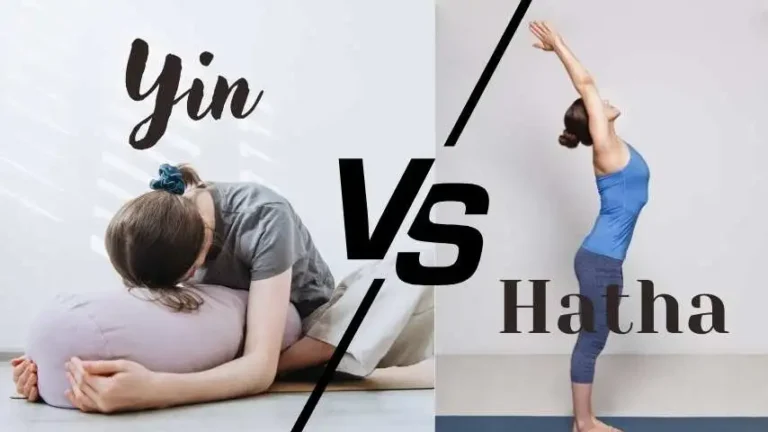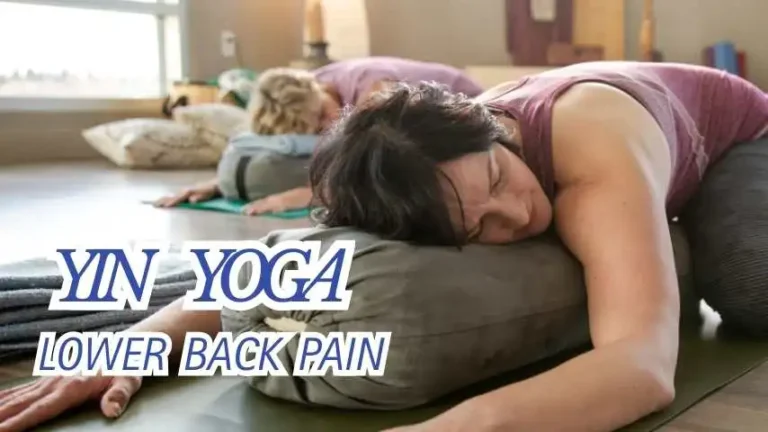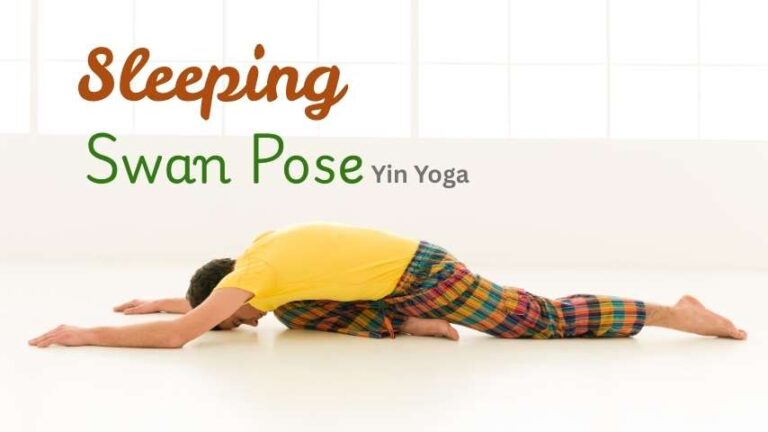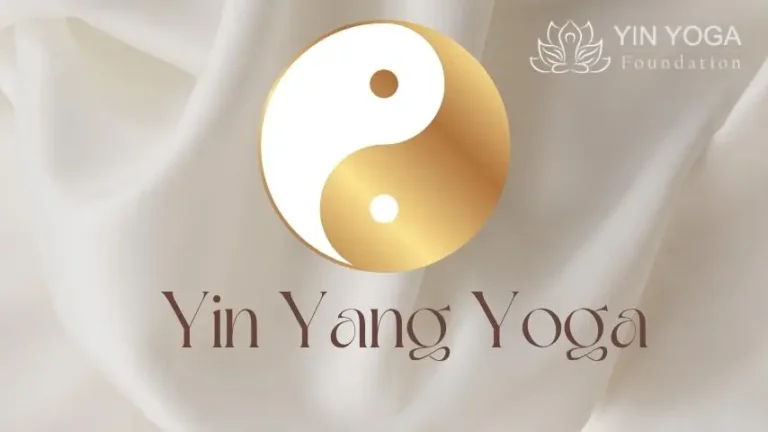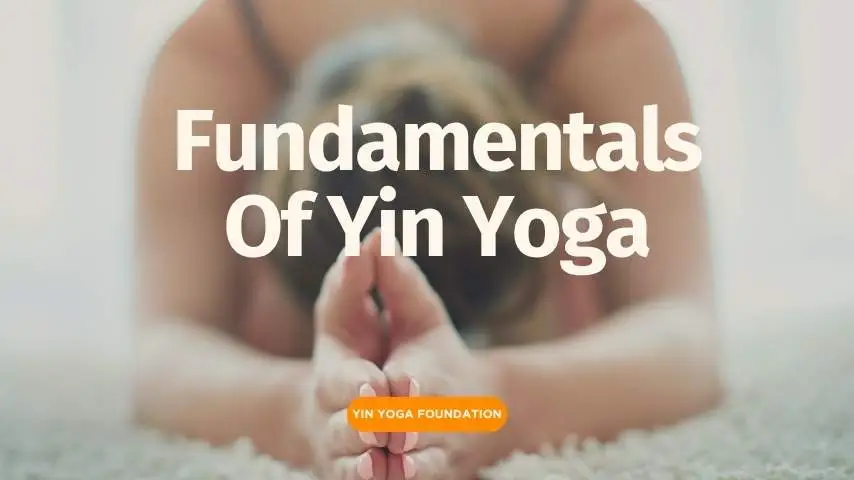
Yin Yoga is a calm but strong practice. The concept draws from old traditions and incorporates new ideas about the body, mind, and energy. Unlike more dynamic styles of yoga such as Vinyasa or Ashtanga, Yin Yoga emphasizes stillness, depth, and mindful surrender.
What is Yin Yoga?
Yin Yoga has a calming and slow pace. The focus is on deep tissues of the body, such as ligaments, joints and fascia. The practitioners hold the poses from 3 to 5 or more minutes. The poses help the practitioner to find more mental peace and flexibility.
Yin Yoga is a combination of Taoist yoga and Indian traditions. Paul Grilley and Sarah Powers made it famous in the West. The blend combines elements of Hatha Yoga, traditional Chinese Medicine, and mindfulness.
1. The Core Philosophies
To understand the foundations of Yin Yoga, you must first grasp its philosophical basis. In Chinese philosophy, Yin is complementary to Yang. Yang represents movement, warmth, and activity while Yin represents stillness, cooling, and receptivity.
Most modern lifestyles and exercise routines are Yang-dominant–fast-paced, active, and goal-oriented. Yin Yoga encourages stillness, slower pace, and inner reflection to bring balance. Balance is important not only on a physical level, but also mentally and energetically.
Five Main Principles of Yin Yoga
Understanding the foundations of Yin Yoga and its core principles is important.
- Enter the pose with a suitable depth: Relax into the position until you only feel mild discomfort, never pain. Yin Yoga does not mean pushing your limits, but rather gently exploring them.
- Stasis : When in a position, reduce movement. The ability to be still allows us access deeper tissue and calms our nervous system.
- Pose for time: The poses are held longer. Beginners can hold poses for up to three minutes. Experts can hold up to 10 minute. Targeting connective tissues is important.
- Decide to stay. Accept both the physical and emotional sensations. Yin Yoga is a mindfulness practice that focuses on acceptance.
- Release slowly: Respect the transition of your body back to neutral by releasing each position gently.
2. Yin Yoga has many physical benefits
The focus of Yin Yoga on health over the long term is a key component. The emphasis is on joint mobility rather than short-term intensity. Yin Yoga is a great way to get a variety of physical benefits.
- Improved flexibility Regular Yin practices can lengthen connective tissues and improve range-of-motion.
- Joint Health: By holding poses, you gently stress joints. This keeps them functional and hydrated.
- Better posture: Release tight muscles in the hips, spine, and hamstrings.
- Improved circulation: Techniques of compression and release stimulate the blood and lymphatic flow in stagnant regions.
3. The benefits of mental and emotional health
Yin Yoga offers more than just physical support; it also provides profound emotional and mental support.
- Stress Relief: Yin’s extended stillness allows your nervous system to shift from “fight or flee” to “rest & digest”.
- Meditation and mindfulness: Every pose is a meditation experience that promotes awareness and presence.
- Emotional Release: Deep stretching helps you release emotions stored within your body.
- Increased resilience and patience Sitting in discomfort improves endurance and self compassion.
4. The Body’s Subtle and Energetic Benefits
The concept of nadis is similar to that used in Indian Yoga. These channels are important in regulating the Qi flow (life energy), and promoting overall health.
The common Yin Yoga poses help stimulate specific meridians. These meridians connect to organs like the heart, liver, kidneys, and stomach. A deep forward fold, for example, may activate the urinary meridian and support detoxification.
5. Key Yin Yoga Poses
These are a couple of common poses which illustrate basics in Yin Yoga.
- Butterfly Pose: Opens the kidney and urinary bladder meridians.
- The Dragon Pose, Deep hip opener. Stimulates liver and gallbladder meridian.
- Caterpillar Position: Forward fold seated that stretches spine and hamstrings.
- Seal Pose or Sphinx Pose Gently backbends to activate the spinal energy.
- Twisted root: This gentle twist targets both the side body and IT band.
Practitioners use props like bolsters and blocks to support these poses.
6. Yin Yoga vs. Restorative Yoga
Restorative Yoga is different from Yin Yoga. Both are slow, meditative practices but they serve different purposes:
- Yin Yoga aims at gently stretching connective tissue to improve flexibility and increase energy flow.
- Restorative yoga is a form of Yoga that focuses on relaxing and relies heavily on props.
This difference can help practitioners select the best practice for them by understanding the foundations of Yin Yoga.
Who can benefit from Yin Yoga?
Anyone can practice Yin Yoga, regardless of their age or level of experience. This is particularly beneficial to:
- Athletes seeking deep tissue recovery
- Professionals in need of mental clarity
- Meditation practitioners looking for embodied stillness
- Anyone who feels “burnt out” by a fast-paced life
People with serious joint injuries or connective tissue disorders should get medical advice before exercising.
8. Starting Your Yin Yoga Practice
Consider the following suggestions to begin incorporating the Fundamentals of Yin Yoga in your daily routine:
- Begin small. Start with 3 to 5 poses, for 20-30 mins.
- Props Bolsters and blankets make practice more comfortable.
- Pay attention to what your body is telling you. Yin is not about achievement, but sensation. Avert pain or sharp discomfort.
- Mindfulness: Slowly breathe, be aware and pay attention to your body as well as mind.
- Be consistent Over time, Yin Yoga’s subtle benefits will compound.
Why Yin Yoga Is Popular
In the last few years, Yin Yoga is becoming more popular amongst yoga practitioners and fitness enthusiasts. Also, a great way to relieve stress. What makes this slow and meditative form of yoga so attractive in our fast-paced society?
The popularity of Yin Yoga reflects a shift in the way people think about wellness. No longer just physical fitness, but a state of balance of mind, body and spirit.
The Counterbalance of a Busy Lifestyle
Yin Yoga has become popular because it is a great antidote for the modern stress. Many people rush from one task to another, and often practice high-intensity exercises that reflect this rapid pace. Yin Yoga encourages patience and stillness. It helps practitioners slow down, reconnect to themselves and find peace.
Yin Yoga focuses on the body’s deeper connective tissue such as joints, ligaments and fascia. Holding poses for 3 to 5 minutes increases mobility and flexibility. More than just physical.
Holding poses for a long time can help practitioners release emotions. This practice allows them to process stored tension and stress.
Its popularity is because of its emotional component. After a Yin Yoga class, many people feel lighter, calmer and more grounded. These feelings go beyond the usual post-workout feeling.
All Levels of Accessibility
Accessibility is another reason Yin Yoga has become so popular. It doesn’t require you to be strong or flexible to enjoy it.
Poses are usually floor-based and supported by props. You can adapt them to fit all types of bodies.
Meditation as a mindful practice
Yin Yoga is also in line with mindfulness, mental health. Meditation helps you reflect and be aware. It involves holding a posture and focusing on your thoughts and feelings. Many people use Yin Yoga as a way to self-care, as well as a moving meditation.
The foundations of Yin Yoga rest on the wisdom of tuning in, slowing down and letting it go. In a society that values speed and often encourages it, this practice promotes stillness. It offers a way to achieve physical flexibility, emotional resilience and inner peace. Yin Yoga is a great complement for seasoned yogis and curious beginners alike.
Understanding and embracing the basics of Yin Yoga can lead to change. This change goes beyond the mat and into healing and wholeness.

